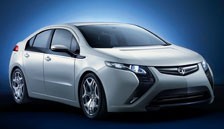Judging by the coverage that has been given to electric vehicles, you could be forgiven for thinking that within a couple of years we’ll all be driving around in silent, zero-emission models and plugging into the national grid rather than filling up at a petrol station.
The truth is rather different. While electric vehicles, most notably from Nissan and Renault, will be making their way on to our roads within
18 months, they are far from being the holy grail of a low, or even zero, emission future.
While information on the actual vehicles is now known, the details of the recharging infrastructure and cost of the vehicles is still up in the air.
CAP’s manufacturer relationships manager Martin Ward said: “Electric vehicles will be very expensive to buy, even with the Government subsidy of up to £5,000.
Nobody yet knows how long the batteries will last, the cost of them, while there is also uncertainty about the lease costs.”
Ward also points out that while the tailpipe emissions of electric vehicles will be zero, there is still a carbon output from the power station that generates the electricity to power these vehicles.
This thinking is not lost on the Government. Professor Brian Collins, chief scientific adviser to the Department for Transport, said: “A greener UK Grid is essential if the benefits of electric vehicles are to be realised.
“Over the next 20 to 30 years electric vehicles are not necessarily going to alter CO2 footprints, but they will make people think about propulsion systems.”
Collins says that charging an electric vehicle from the UK Grid saves around 40% of the CO2 emitted by a petrol car, although this advantage reduces to between 15 and 30% for diesel and hybrid models.
Mark Sinclair, director of Alphabet, said: “Paradoxical as it may seem, petrol and diesel are still the surest way for fleets to reduce their carbon footprint and their fuel bills.
“Whether you focus on cost or carbon, the commercial case for alternative fuels and technologies have yet to be made.
“Although the Government has committed millions of pounds to developing electric road transport, both battery technology and a recharging infrastructure will still be in the trial stage for another five years at least.”
That thinking on uncertainty is backed by Lombard Vehicle Management. Craig Smith, its head of asset risk.
He said: “This will all come down to legislation as governmental policy will drive infrastructure and taxation.
"Euro 5 is tight on emissions, but Euro 6 is almost unachievable for some manufacturers, so that will determine their focus.
“For the mass market, electric-only has a limited market due to the range limitations, so petrol or diesel hybrid is the short-term solution until better infrastructure is created.
"However, even then I still see this accounting for only small volumes.
“It feels rather like the VHS vs Betamax scenario, with manufacturers exploring different approaches, but with an unknown in terms of the legislation that will ultimately overlay the options and drive one route.”
LeasePlan’s commercial director Matt Dyer added: “The biggest roadblock for alternative fuels has been the lack of a unified approach.
"The options have grown over time, and few have been able to command a united effort from the motor industry.
"Electric vehicles seem to stand the best chance of rallying joined-up support.
“Petrol and diesel will no doubt continue to dominate, but we expect electric options to grow faster than any other, and possibly even dominate in 10-15 years’ time.”
Ward cites hybrids as the way forward. He added: “The real way forward is hybrids – either petrol or diesel linked to an electric motor.
“The Vauxhall Ampera, which has a petrol engine that charges the battery, but simply acts as a generator rather than driving the wheels, seems to be the way forward.”
Figures from the FN50 show that the number of hybrids on the fleets of FN50 companies has nearly doubled in the past 12 months, from 4,859 to 8,718 this year.
This still only accounts for 0.6% of the FN50’s 1,359,519 vehicles.
And while alternative fuel vehicles will continue to grow in numbers, the traditional petrol or diesel engine is still going to be a huge presence for the next 20 years.
Dr Bernd Bohr, chairman of Bosch Automotive Group, believes the fuel consumption of petrol and diesel cars can be reduced further by up to a third in that timescale (Fleet News, June 25).
He added: “This would turn a mid-class diesel into an 80mpg car.”
A look back shows the pace of development. When the Ford Focus was launched in 1998 its 1.6-litre diesel had CO2 emissions of 162g/km – today, the Focus Econetic with stop-start emits 99g/km.
Hybrid future
The number of hybrid models is set to double over the next 12 months with Toyota, Honda and Peugeot all adding to their ranges.
2010 (early) Toyota Prius plug-in hybrid trial to begin with selected fleet customers.
2010 (early) Honda CR-Z on sale.
2010 (second-half) Toyota Auris HSD on sale.
2011 (spring) Peugeot 3008 Hybrid4 on sale.
2011 (early) Honda Jazz hybrid on sale.
2011 Lexus LF-Ch













Login to comment
Comments
No comments have been made yet.